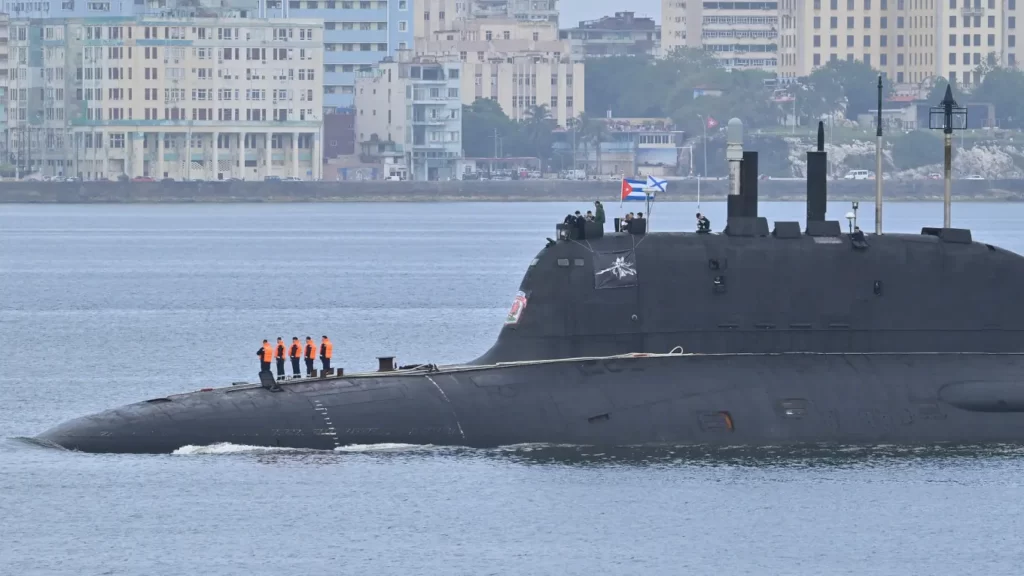After more than two years of war between Ukraine and Russia, the Russian Navy is reportedly facing significant challenges in carrying out its extensive modernization process, which has been underway for over 15 years. This initiative aims to restore its capabilities and prestige to levels comparable to those before the fall of the Soviet Union. Undeniably, the process has yielded some results, particularly in the submarine domain, with the addition of the advanced Severodvinsk (Yasen) nuclear-powered class. However, it seems unlikely that this progress will be sustainable as long as the war continues.

This assertion was made by author H. I. Sutton in a recent article published by the specialized outlet Naval News. Sutton argued that various political and financial challenges facing Moscow are becoming increasingly evident, leading to the conclusion that “the future Russian Navy may retain some high-tech assets, particularly advanced submarines, but its overall influence at sea is likely to diminish.”
It is useful to recall that the ambitious Russian program began in the mid-2000s, selecting the best ships of the former Soviet Navy for modernization and launching a broad array of new projects to achieve a leap in capabilities. Starting in the 2010s, particular emphasis was placed on integrating new weapons and sensors into older ships, notably Kalibr cruise missiles and Zircon hypersonic missiles.

In terms of submarines—the centerpiece of the Kremlin’s program—up to 12 new units were ordered, becoming one of the Ministry of Defense’s acquisition priorities. However, many deliveries suffered significant delays, some of which were evident even before the 2022 invasion. Compounding these issues is the failure of the Lada-class submarines, whose production remains limited in favor of updated versions of the older Kilo-class submarines. While these models sustain a considerable number of export orders, they lag in technical capabilities compared to their Chinese and Western counterparts.
The situation has worsened with the prolonged and costly war in Ukraine, where artillery platforms and drones have taken on a more prominent role. This shift demands a change in budgetary and production planning priorities. According to Western experts, the past few months have revealed signs of desperation worth noting. One clear example is Russia turning to North Korea for artillery shells, ammunition, and missiles, as well as deploying several thousand soldiers.


The consequences are already visible in concrete terms, especially concerning two of the main surface fleet modernization projects: the aircraft carrier Admiral Kuznetsov and the nuclear cruiser Admiral Nakhimov. In the case of the former, the issues go beyond costs to include personnel shortages, with OSINT sources indicating that much of its crew has been deployed to combat. Meanwhile, the Kirov-class cruiser faces even greater delays, despite being a cornerstone of the modernization program—a promise dating back to 2008 that has yet to deliver results.
This stagnation is a significant issue, suggesting that the program has become more of a propaganda tool than a strategic initiative. The Nakhimov itself has been inactive for around 25 years, with its first return to service anticipated in the coming months, albeit without its nuclear reactor operational.

For now, it is worth noting that the Russian Navy has recently received two new nuclear submarines for its Pacific fleet: the Emperor Alexander III and the Krasnoyarsk, belonging to the Borei-A and Yasen-M classes, respectively. Additionally, the fleet is expected to incorporate the new Karakurt-class corvette Rzhev, built by United Shipbuilding Corporation at the Amur Shipyard. Complementing these additions, the Ak Bars Shipyard is reportedly upgrading Project 22160 ships to adapt them to the conflict in Ukraine, shifting their focus away from their original maritime patrol role. However, none of these projects match the scale of those mentioned earlier.
Images used for illustrative purposes.
You may also like: The Russian Navy frigate Admiral Gorshkov arrived in Tunisia as part of an official visit









